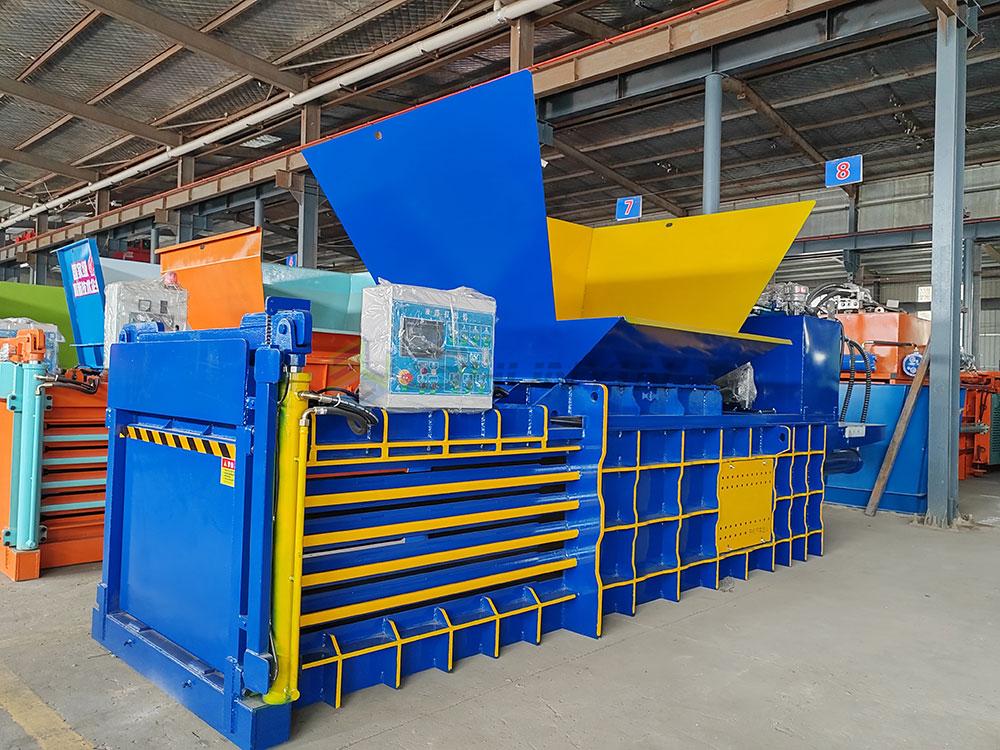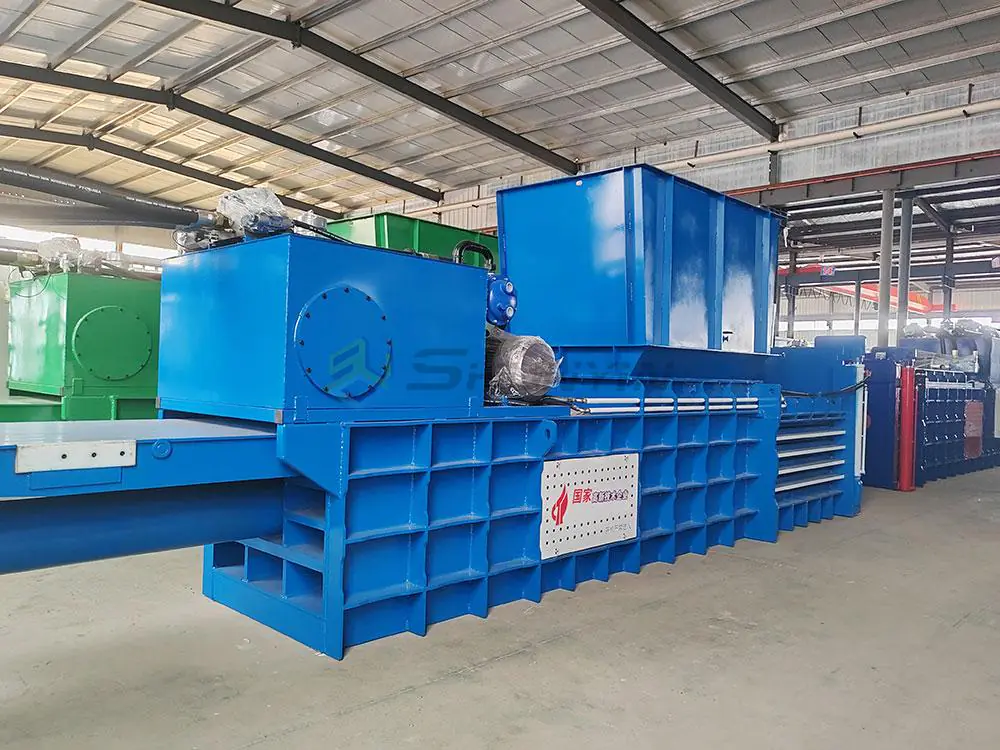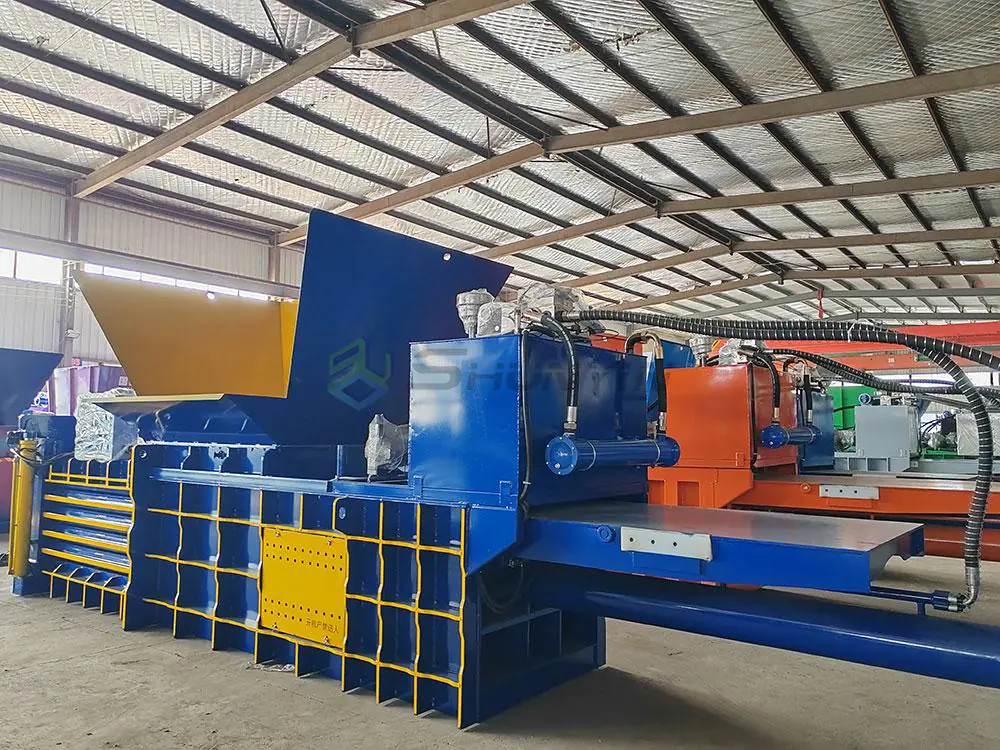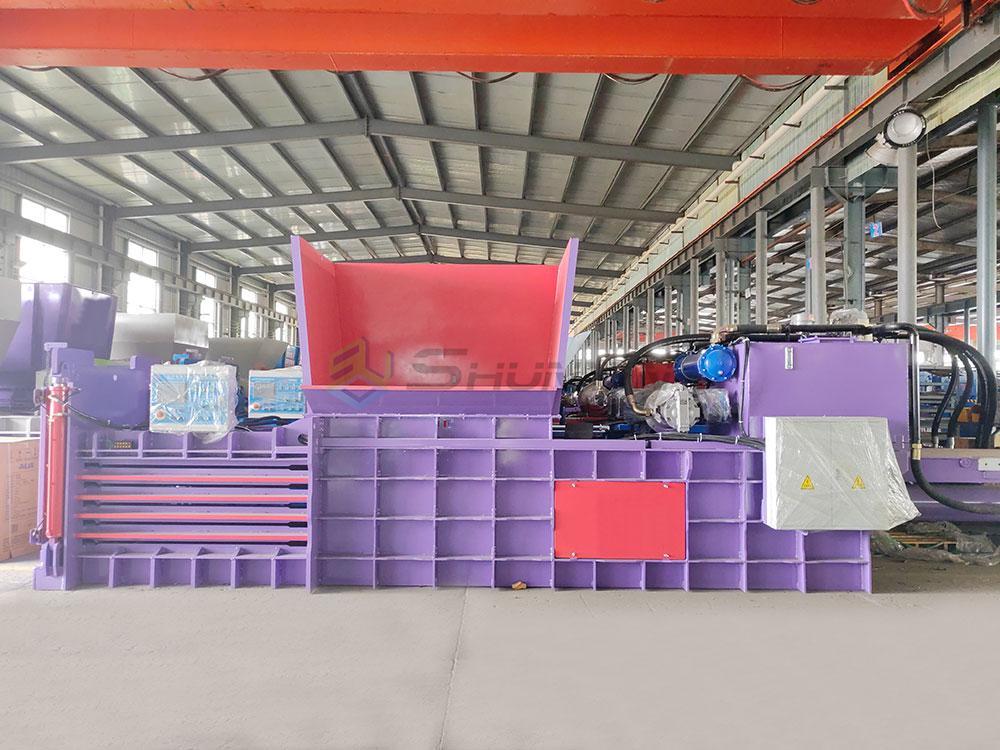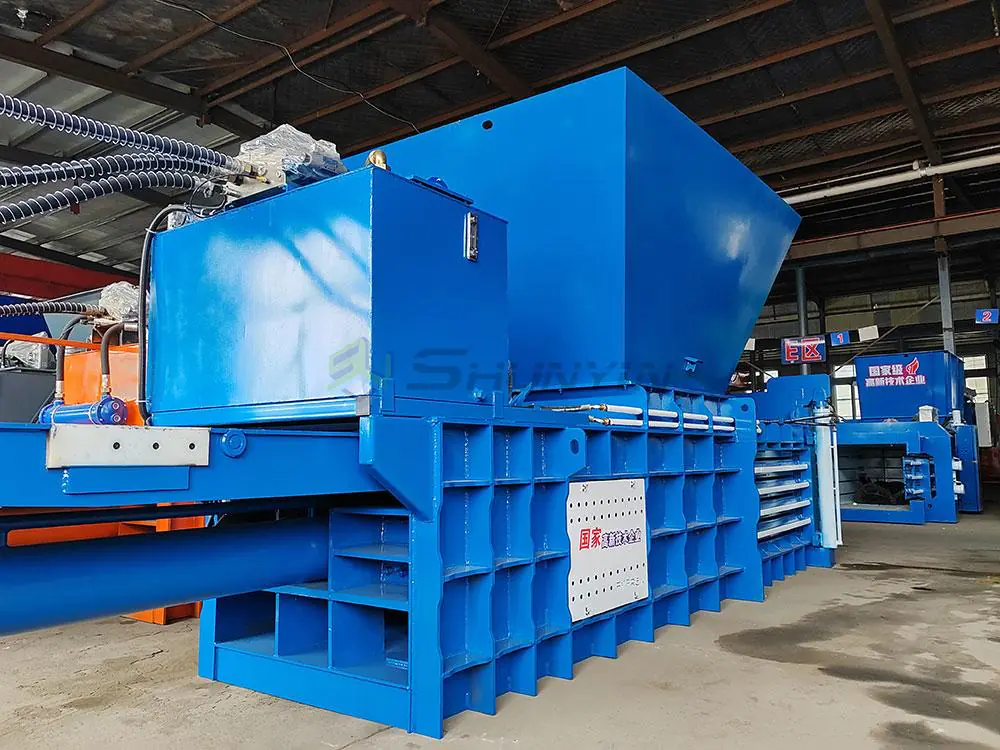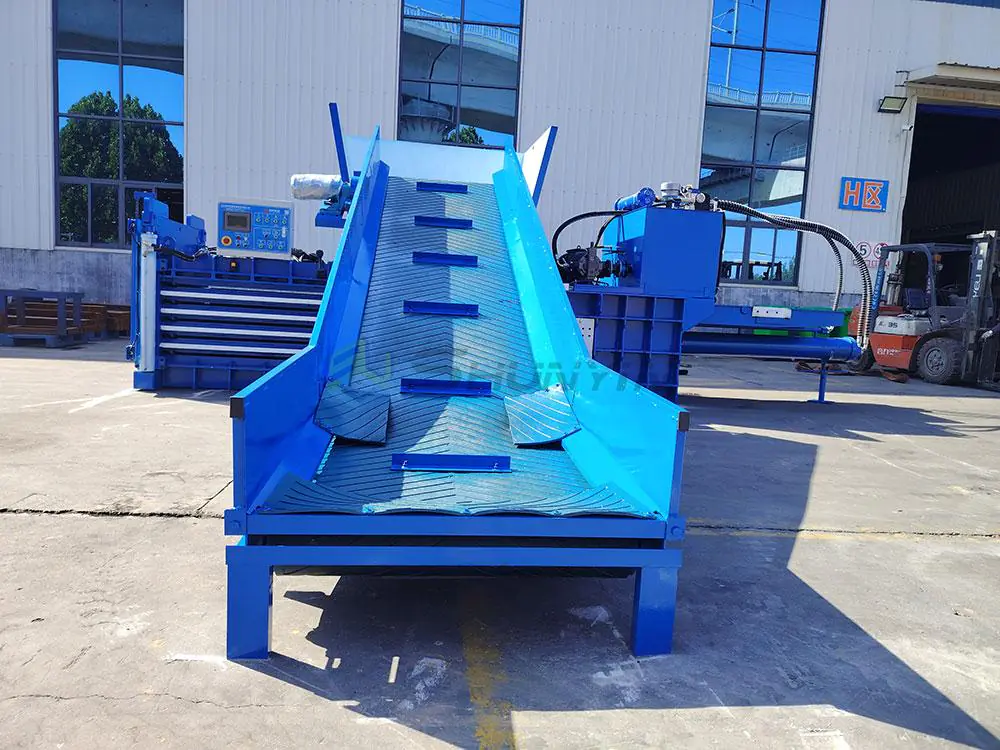
Managing waste effectively can be challenging. Choosing the right baler is essential for optimizing your waste management processes.
A horizontal baler is ideal for handling large volumes of waste, offering high efficiency and consistent compression. It reduces storage space, improves waste handling, and is versatile for various materials like cardboard and plastics. This makes it a top choice for businesses aiming to optimize waste management processes.
I remember the first time we switched to a horizontal baler. The improvement in our waste processing was immediate and impressive.
What is the difference between a vertical and horizontal baler?
Choosing between a vertical and horizontal baler depends on your specific waste management needs and operational requirements.
The key difference between vertical and horizontal balers is their orientation and capacity. Vertical balers are more compact and suitable for smaller operations, while horizontal balers are larger, more efficient, and ideal for high-volume waste processing. Horizontal balers also allow for continuous operation, making them better for larger businesses.

Initially, I was unsure which baler suited our facility best. After evaluating both types, the horizontal baler clearly met our high-volume needs more effectively.
Vertical vs. Horizontal Balers
Understanding the key differences helps in making an informed decision.
Comparison Table
| Feature | Vertical Baler | Horizontal Baler |
|---|---|---|
| Compression Direction | Vertical (up and down) | Horizontal (side to side) |
| Space Requirements | Smaller footprint, ideal for limited spaces | Requires more floor space |
| Bale Size | Smaller, compact bales | Larger, denser bales |
| Compression Rate | Slower, suitable for lighter materials | Faster, handles heavy and bulky materials |
| Cost | Generally lower initial cost | Higher initial investment but greater efficiency |
Operational Efficiency
Horizontal balers often provide higher operational efficiency due to their ability to handle larger volumes and heavier materials more effectively.
- Throughput: Horizontal balers can process more material in a shorter time.
- Bale Density: Produces denser bales, reducing storage and transportation costs.
- Automation Potential: Horizontal balers are more likely to be integrated with automated systems for improved productivity.
Application Suitability
Different balers are suited to different types of materials and operational scales.
- Vertical Balers: Best for facilities with limited space and lighter waste materials such as office paper and plastic bottles.
- Horizontal Balers: Ideal for large-scale operations dealing with bulky and heavy materials like cardboard, metals, and textiles.
What is a horizontal baler?
A horizontal baler is a robust machine designed to compress various types of waste materials into compact bales efficiently.
A horizontal baler is a type of machine used to compress and bundle waste materials, such as paper, cardboard, and plastic, into compact bales. It operates horizontally, allowing for higher capacity and efficiency in large-scale waste management or recycling operations. It’s ideal for continuous and heavy-duty processing.

When I first integrated a horizontal baler into our operations, the consistency and speed of bale production were game-changers for our waste management process.
Components of a Horizontal Baler
A horizontal baler comprises several essential components that work together to ensure effective baling.
Key Components Table
| Component | Function |
|---|---|
| Compression Chamber | The area where materials are compressed into bales |
| Hydraulic System | Provides the necessary force for compression |
| Tying Mechanism | Automatically binds the bale with wire or twine |
| Control Panel | Allows operators to manage and monitor the baler |
| Bale Ejection System | Releases the finished bale from the chamber |
The Baling Process
The horizontal baling process involves several steps to ensure materials are effectively compressed and secured.
- Loading: Waste materials are fed into the compression chamber.
- Compression: Hydraulic systems apply force to compact the materials.
- Tying: The tying mechanism binds the bale automatically.
- Ejection: The completed bale is ejected and moved for storage or transport.
Advantages of Horizontal Balers
Horizontal balers offer specific benefits that make them suitable for various waste management needs.
- Higher Compression Rates: Achieves greater density, reducing the number of bales needed.
- Larger Bale Sizes: Capable of producing bigger bales, ideal for bulk waste materials.
- Automation: Many horizontal balers come with automated features, enhancing efficiency and consistency.
- Versatility: Suitable for a wide range of materials, from cardboard and plastics to metals and textiles.
What are vertical balers used for?
Vertical balers are specialized machines designed to handle specific types of waste materials efficiently.
Vertical balers are used to compress recyclable materials like paper, cardboard, plastics, and textiles into compact bales. These machines operate vertically, making them ideal for small to medium-sized businesses with limited space. They are efficient for reducing waste volume and improving storage or transportation for recycling.

When we first used vertical balers, they proved perfect for our office waste, neatly compacting paper and plastic waste into manageable bales without occupying much space.
Applications of Vertical Balers
Vertical balers are versatile and can be used in various settings to manage different types of waste.
Applications Table
| Application | Description |
|---|---|
| Office Waste Management | Compressing paper, cardboard, and plastic waste for recycling |
| Retail Stores | Managing packaging materials and promotional items |
| Small Manufacturing Units | Handling light industrial waste like textiles and plastics |
| Educational Institutions | Managing paper and plastic waste from classrooms and offices |
Benefits of Vertical Balers
Using vertical balers offers several advantages tailored to specific waste management needs.
- Space Efficiency: Vertical balers have a smaller footprint, making them ideal for facilities with limited space.
- Cost-Effective: Generally lower initial investment compared to horizontal balers.
- Ease of Use: Simple operation and maintenance make them suitable for small to medium-sized operations.
- Consistent Bale Quality: Produces uniform bales, facilitating easier recycling and transportation.
Maintenance and Reliability
Maintaining vertical balers is straightforward, ensuring long-term reliability and performance.
- Regular Cleaning: Keep the compression chamber free from debris to prevent jams.
- Lubrication: Ensure moving parts are well-lubricated to reduce wear and tear.
- Inspection: Periodically check hydraulic systems and tying mechanisms for any signs of damage or wear.
- Timely Repairs: Address any mechanical issues promptly to avoid operational downtime.
What are some advantages of a large round baler over a conventional square baler?
Large round balers offer several advantages over conventional square balers, making them a preferred choice in many agricultural and industrial settings.
Large round balers offer advantages over conventional square balers, such as higher bale density, faster operation, and better handling of various crop types. They also require less maintenance, reduce labor costs, and are more efficient for large-scale operations, making them ideal for commercial farming and hay production.

I used to rely on square balers, but switching to a large round baler significantly improved our bale handling and storage efficiency.
Comparison of Bale Types
Understanding the differences between round and square bales helps in selecting the right baler for your needs.
Bale Comparison Table
| Feature | Large Round Baler | Conventional Square Baler |
|---|---|---|
| Bale Shape | Round | Square |
| Handling Ease | Easier to roll and transport | Requires more space for stacking and storage |
| Yield per Bale | Higher yield due to better material coverage | Lower yield; more bales needed for the same volume |
| Storage Efficiency | Requires less space for storage | Takes up more space due to shape |
| Material Coverage | Better coverage for uneven surfaces | Less effective on uneven terrain |
| Flexibility | Suitable for a variety of materials | Primarily used for specific types of waste |
Benefits of Large Round Balers
Large round balers offer several key advantages that enhance operational efficiency and cost-effectiveness.
- Higher Yield: Round balers can pack more material into each bale, reducing the number of bales needed.
- Space Saving: Round bales are easier to stack and store, optimizing space utilization.
- Ease of Transport: The round shape facilitates easier rolling and handling, minimizing labor efforts.
- Versatility: Suitable for a wider range of materials, including hay, straw, and certain types of waste.
- Durability: Round bales tend to be more durable and less prone to damage during transportation and storage.
Practical Applications
Large round balers are versatile and can be used in various settings to maximize their benefits.
- Agriculture: Ideal for baling hay, straw, and other forage materials for livestock feed.
- Recycling Centers: Efficiently compressing bulk waste materials for easier handling and recycling.
- Industrial Facilities: Managing large volumes of recyclable materials like cardboard and plastics.
- Municipal Waste Management: Streamlining the compression and transportation of bulky household and commercial waste.
Maintenance and Efficiency
Maintaining large round balers ensures their longevity and consistent performance.
- Regular Inspection: Check for wear and tear on compression chambers and tying mechanisms.
- Lubrication: Keep all moving parts well-lubricated to prevent excessive friction.
- Component Replacement: Replace any worn or damaged parts promptly to maintain efficiency.
- Operator Training: Ensure that operators are well-trained to handle the baler effectively and safely.
Conclusion
Choosing a horizontal baler offers significant advantages in waste management, including higher compression rates, larger bale sizes, and improved operational efficiency. Understanding the differences between baler types and their specific applications enables you to make informed decisions, leading to more effective and sustainable waste processing solutions. Investing in a horizontal baler can transform your waste management practices, providing long-term benefits and enhancing overall productivity.


